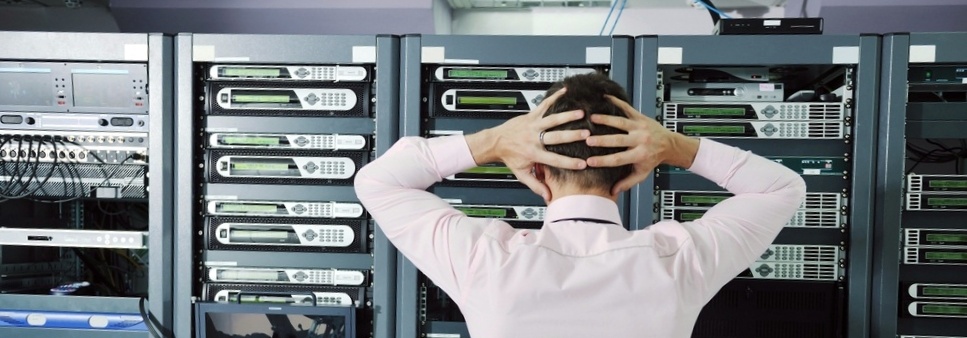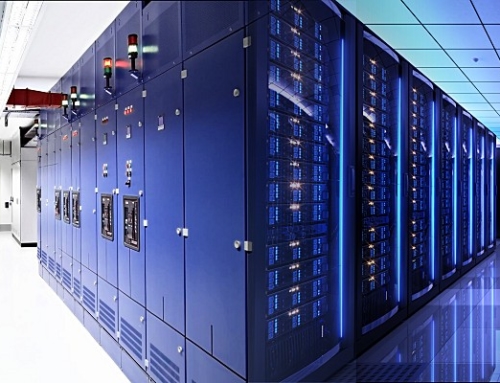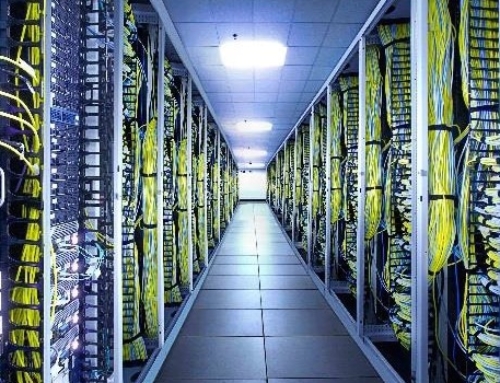Whether it’s to check emails with our morning coffee, book a hotel room or run a global organization, everyone relies on the Internet, and its effective operation is now a crucial aspect of businesses around the world. With over three billion people online, the amount of data being generated is expanding exponentially, creating a huge increase in the demand for digital infrastructure.
Considered the brain of the operation, data centres are at the heart of everything we do and ensure that all our information is securely processed and stored. The data centre industry is flourishing as result of this growth, and standards are constantly evolving to make sure this critical infrastructures is managed safely and efficiently. According to a forecast from the International Data Corporation (IDC), the total worldwide data centre space will continue to increase, growing from 1.58 billion square feet in 2013 to 1.94 billion square feet in 2018. While demand for more-modern computer systems increases, their rise also brings along a new array of safety challenges.
Continuous Operations
A main concern with modern data centres is business continuity. Companies rely on their information systems to constantly run their operations. Data centres outages occur for multiple reasons, ranging from human error or equipment failures to external power disruptions. One thing they all have in common is that each will have serious financial consequences. If a system becomes unavailable, company operations may be impaired or stopped completely. In fact, the cost of data centre outages can range from $75,223 to $1,734,433 per organization. Data centres suffer on average 2.5 outages per year, each lasting approximately 134 minutes. But it’s not just the facilities that need protecting, their backup systems do too. It is therefore crucial to provide a reliable and efficient infrastructure for IT operations to minimize any risk of disruption and ensure complete asset protection.
Feeling the Heat…
Data centres are complex facilities that concentrate thousands of optical and electrical connections in a densely packed space. As a result, equipment can easily overheat, having serious consequences on the overall efficiency of the building. In these tights spaces, racked equipment generates a large amount of heat. For many data centres, HVAC equipment is the primary heat-extraction medium, ensuring that chilled water is pumped in and out of the facility. But water and electronics don’t mix, and water accumulating on the floor or dripping from overhead pipes can and does interrupt server operations.
In addition, some server facilities require diesel-powered backup generators. In many older buildings, generators have been squeezed into spaces that were not originally designed for that purpose. Each generator requires a day tank, fuel pumps, valves, hose connections and similar fittings. Frequently, there will be a supply and return piping connection to a larger underground diesel storage tank outside of the building. An undetected diesel leak presents a major fire risk and, if ignited, could lead to a rapidly growing fire that exceeds the capacity of sprinkler systems. The fact that most data centres and server rooms have raised floors makes the risk even bigger, as water and fuel seek the lowest point, making raised-floor facilities even more vulnerable because the leak is often concealed.
…And the Cold
But it’s not just heat that can pose a threat to data centre security. More and more data centre operators are choosing cold locations in an effort to cut cooling and power costs. From Facebook’s new facility in Sweden to Google’s €450 million expansion plans for its existing facility in Finland, companies are increasingly looking north when expanding their operations. The reasons are simple: data centres are one of the largest and fastest-growing consumers of electricity. In the U.S. alone, they consumed an estimated 90 billion kWh of electricity in 2013, which is equal to the total capacity of the country’s top 30 power plants. By using outside air instead of mechanically cooled air, data centre operators are hoping to significantly reduce their energy bills.
Although cold climates offer natural cooling opportunities, there are tradeoffs to locating data centres in cold-weather regions. With average temperatures of –20˚C in the winter, frost and snow can become a real hazard to air-conditioning units, cooling towers and generators. For example, if temperatures get too cold, it becomes difficult to heat the air taken in from the outside, which can result in operation outside of the recommended temperature ranges. Outdoor equipment, such as drain pipes, HVAC coils and fuel systems are also vulnerable. If HVAC units are improperly sealed, they can easily allow snow to enter the facility, while frozen units can begin to leak water once the thaw begins. At the same time, external pipes and poorly insulated internal water lines can burst when exposed to subzero temperatures, leading to considerable damage and disruption.
Protecting Valuable Data Centre Assets
Even though the causes of data centre power outages can be hard to predict, operators can take some precautions. For instance, to overcome the issues associated with traditional flooding, leak-detection sensors should be put around the perimeter of the room approximately 3ft from the outer walls. If using a raised floor, then consideration should be given to placing the sensor under the raised floor, as liquids always seek the lowest point. Two types of sensors are common for water-based leaks: spot and water-snake cable-based sensors. Spot sensors will trigger an alert when water touches the unit. Water-rope or water-snake cable sensors use a conductive cable whereby contact at any point on the cable cause the alert. The latter is recommended owing to its higher range and accuracy.
On the other hand, for fuel-based leaks, sensors must be deployed around the generator pad, under day tanks, and in double-wall pipes or trenches connecting the supply to minimize risks. The product must be able to react to the presence of diesel in a few seconds and detect a puddle of fuel spreading across a flat surface or a layer of diesel floating on water. For better efficiency, the sensor cable should monitor a large amount of piping with accuracy and consistent precision.
For data centres in icy climates, a high-performance frost-protection system can be installed to prevent damage to the building and its contents. Self-regulating heat-tracing cables can be easily mounted directly onto pipes, drains and gutters or around HVAC units and generators to protect from frost and ensure that a continuous drain path is maintained. They automatically adjust their heat output to the surrounding temperature for optimum energy efficiency and are highly resistant to extreme environments. In addition, advanced control systems ensure that the system is only operating when it freezes, further contributing to data centres’ energy-saving initiatives.
Reliable Protection From a Single Supplier
Server facilities are the nerve centres of most modern businesses. Regardless of building size or the complexity of the operations, data centres need reliable and efficient safety systems in place to ensure valuable data is protected at all times. By installing high-performance heat-tracing and leak-detection systems, operators maximize the resilience of their infrastructures so that servers can keep on running and users don’t experience any service interruption.
- Article Source: DataCentreJournal.com






